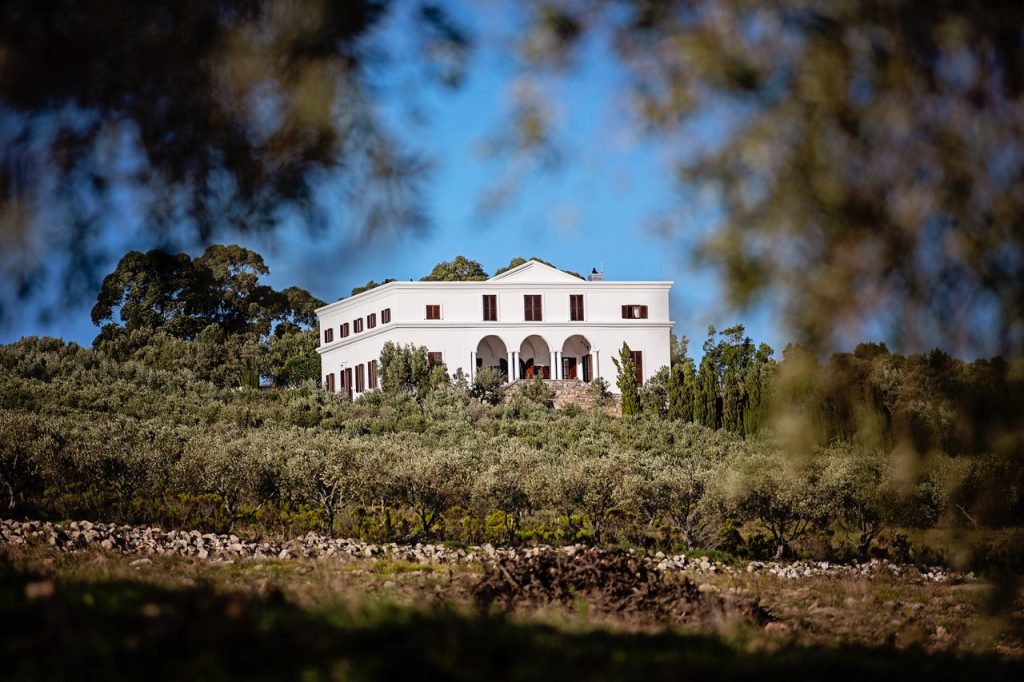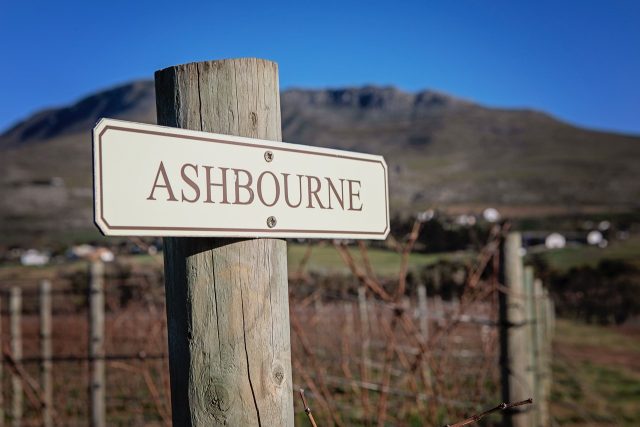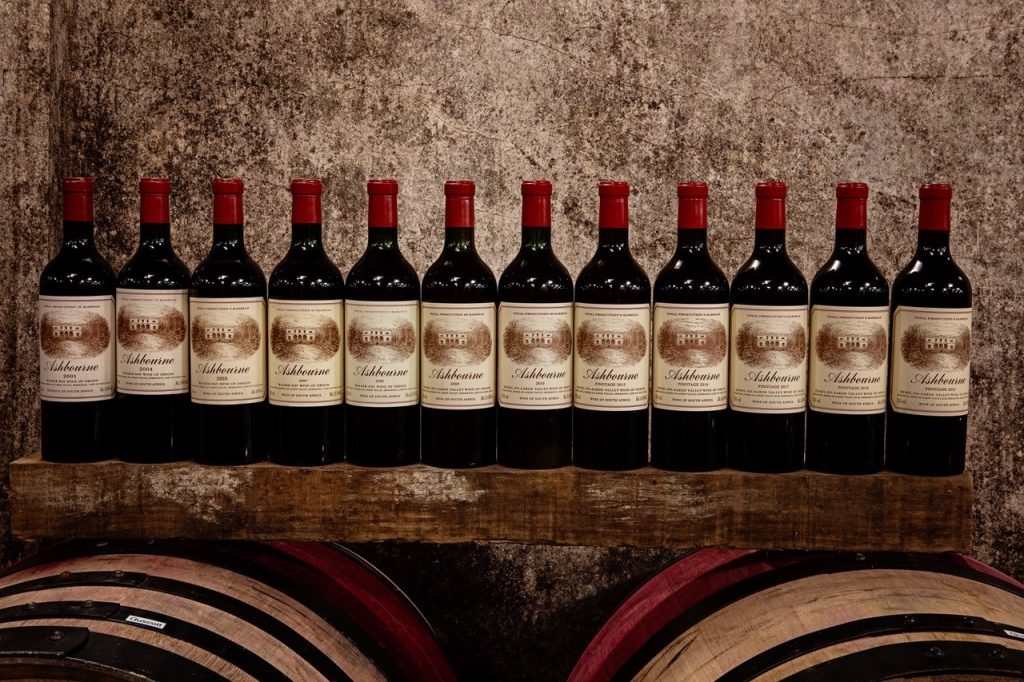This website uses cookies so that we can provide you with the best user experience possible. Cookie information is stored in your browser and performs functions such as recognising you when you return to our website and helping our team to understand which sections of the website you find most interesting and useful.
Ashbourne Pinotage: ‘the path of most resistance’
Best-known for making cool-climate Chardonnay and Pinot Noir, Anthony Hamilton Russell is also an evangelist for Pinotage – or rather Pinotage of a certain kind. But transforming the reputation of South Africa’s emblematic grape variety is no easy task, as Richard Woodard discovers.

“It’s unusually open-minded people who make a conscious decision to come to an event that’s centred on Pinotage…” There’s a wry smile on Anthony Hamilton Russell’s face, but he’s only half-joking. More than 25 years after embarking on a mission to elevate perceptions of South Africa’s emblematic grape variety, he knows there’s plenty of work still to do.
You may wonder why Hamilton Russell decided to bother with Pinotage in the first place. With a main property – Hamilton Russell Vineyards – lauded for its cool-climate Chardonnay and Pinot Noir, there was no apparent need to start working with a grape variety that, to put it mildly, divides opinion among trade and consumers.
We’ll come back to those perceptions later. What persuaded Hamilton Russell to establish Ashbourne in 1996, alongside sister property, Southern Right, a maker of both Pinotage and Sauvignon Blanc? “I was thinking to myself that Pinotage is something that has to be worked with almost out of duty,” he explains. “It’s what South Africa has given to the world. It’s also the path of most resistance.”
Hamilton Russell’s vision was of a different sort of Pinotage versus the soft, spicy – sometimes flabby – examples produced in the heat of Stellenbosch and beyond. Focusing on the variety’s lineage (Pinot Noir and Cinsault) and its tendency to ripen early, he felt the maritime climate and “marginal” clay-based soils of the Hemel-en-Aarde Valley might be a winning combination.
“It tends to ripen phenolically at lower alcohol levels, and it has very thick skins and a lot of tannin,” Hamilton Russell explains. “At that time, Australia had been very successful with softer styles of wine, and people here almost wanted to turn Pinotage into something like that, and it just doesn’t suit it. I just had the idea to do something a bit different with it.”

Pinotage’s typical challenges – low acidity, high pH – are less of an issue at Ashbourne, where it ripens not long after Pinot Noir. Hamilton Russell acknowledges that a little carbonic within the berries is “inevitable”, adding that while the variety needs to be picked phenolically ripe, over-extraction is a risk. “Its overlap with Cinsault to me is its tendency to overbear, although it doesn’t really do that with us. In some young vineyards, you have to drop 30% of the crop.”
If anything, Ashbourne’s style has grown in delicacy and refinement over the years. The perfumed, precise 2020 vintage stands at just 12.8% ABV, and was quite closed and reductive on release. “That’s when we know it’s going to be good,” says Hamilton Russell.
The soon-to-be-released 2021 vintage, he adds, has a smell of roses and black tea, such that “you could almost put it in a black glass and think it was Alsace Gewurz” – the result of site combined with a “discovery” clone of Pinotage, somewhat prosaically called Clone 6.
But even from the inaugural vintage, Ashbourne represented a very different kind of Pinotage – always assuming you knew it was Pinotage in the first place. Hamilton Russell recalls Norma Ratcliffe of Warwick Estate tasting it blind and guessing it was a Bordeaux that was “way too young”. He adds: “Only one person tasting it has ever said Pinotage and South Africa, and they had a pretty big clue because they were at our property.”
For some time, Ashbourne was the Pinotage that dare not speak its name. So worried was Hamilton Russell about the negative associations that he relegated the name of the variety to the back label in early vintages. “That didn’t work,” he acknowledges, “so we put the variety on the label.”

He was also concerned that Ashbourne might become “the de facto reserve” for Southern Right, so he turned it into a blend, teaspooning the Pinotage with tiny amounts of other varieties. “That was a marketing idea that failed from a quality point of view,” he admits. “The thinking was to sell it as a wine of place and not to have it deal with the baggage that Pinotage has.”
For all that Hamilton Russell is clearly no fan of many examples of the “traditional” style of South African Pinotage, he maintains that the variety’s main problem is one of communication. For this he blames “the MWs of the mid-1970s, who pronounced on it and said it’s a variety with no future” – and contrasts the enduring negativity in the UK with differing attitudes in the US and elsewhere.
He also acknowledges that Ashbourne’s tiny production – there will be fewer than 250 cases of the 2021 vintage on release – frees him up to take decisions based on passion rather than pragmatism.

Much the same could be said for the property’s white wine, Sandstone, an amphora-fermented and aged blend of Sauvignon Blanc, Semillon and Chardonnay that prioritises texture over varietal character. Hamilton Russell is now planting Sauvignon Gris, and plans to include more Chardonnay in the blend in future, to drive that textural element further.
More than 25 years on, Hamilton Russell’s evangelism for Pinotage – or Pinotage of a certain type – remains undimmed, even if the mission has proven more challenging than even he had envisaged. “Now the aim is to get Pinotage planted in all parts of Hemel-en-Aarde,” he says. “At the moment, Hemel-en-Aarde Ridge is the only appellation without it.
“I want to be able to say we have Pinot Noir, we have Chardonnay and we have South Africa’s indigenous grape varietal too – and it tastes like this when it’s from here, like this when it’s from here, and like this when it’s from here.”
Ashbourne Pinotage and Sandstone – as well as the wines of Hamilton Russell Vineyards and Southern Right – are represented in the UK by Mentzendorff.

